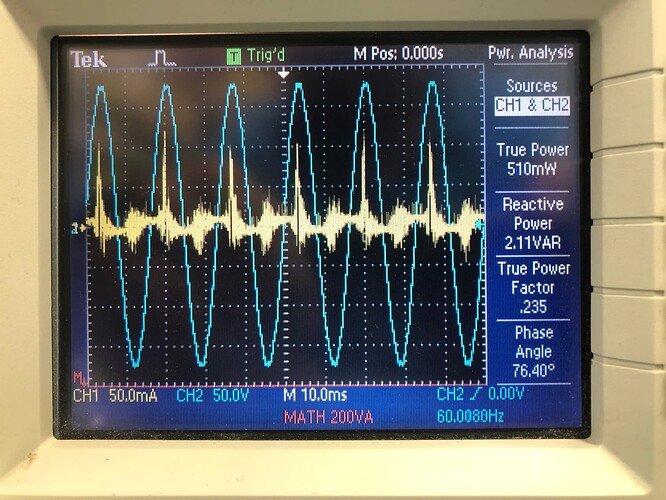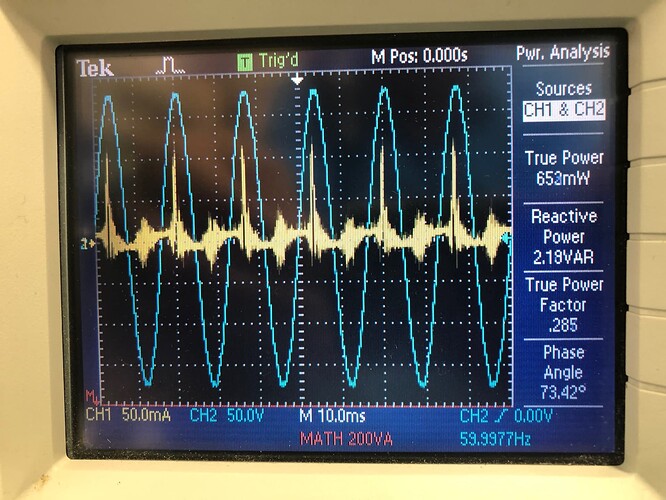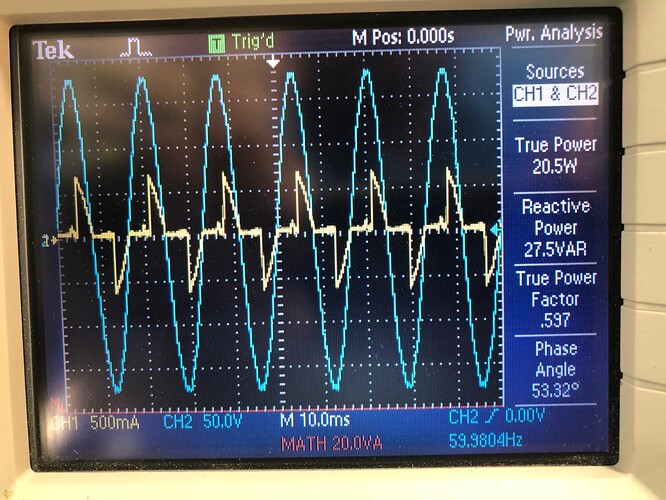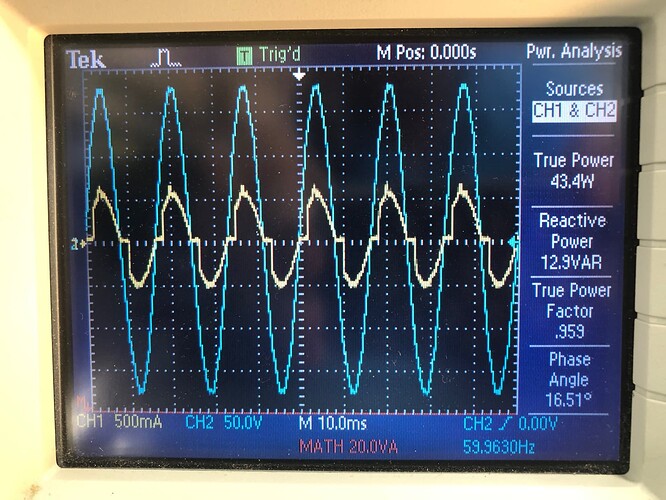I tried to measure the load leakage current on the black switch a few different ways. I was always getting less than 200uA. The best way I tried was connecting a 100ohm resistor as the load and measuring across it with the scope set to 1A/V. The scope was reading was 16mA RMS and this reading is 100X the actual current making it really 160uA. It seems the switch really doesn’t leak much current and it doesn’t explain why led loads will glow when connected to one.
Next I connected a RED dimmer. These are the power measurements.
On or Off with no load connected.
Off with a 40W incandescent bulb connected.
The above shows the dimmer leaks a lot more current to the load. Likely due to the ability to operate without a neutral.
And just for fun, on at about 1/2 dimmed with that 40W bulb.
The conclusion from this last one is that it’s definitely a leading edge dimmer. Previous info has said this is MOSFET based which is needed for trailing edge dimming but IMO it is pointless to add the complexity of using MOSFETs for leading edge. I’m curious why it’s not a trailing edge dimmer because that seems to make LED loads more happy.
And a last one, dimmed fully on.
Which shows the dimmer never truly goes fully on. There is actually more off-time then I expected to see.



